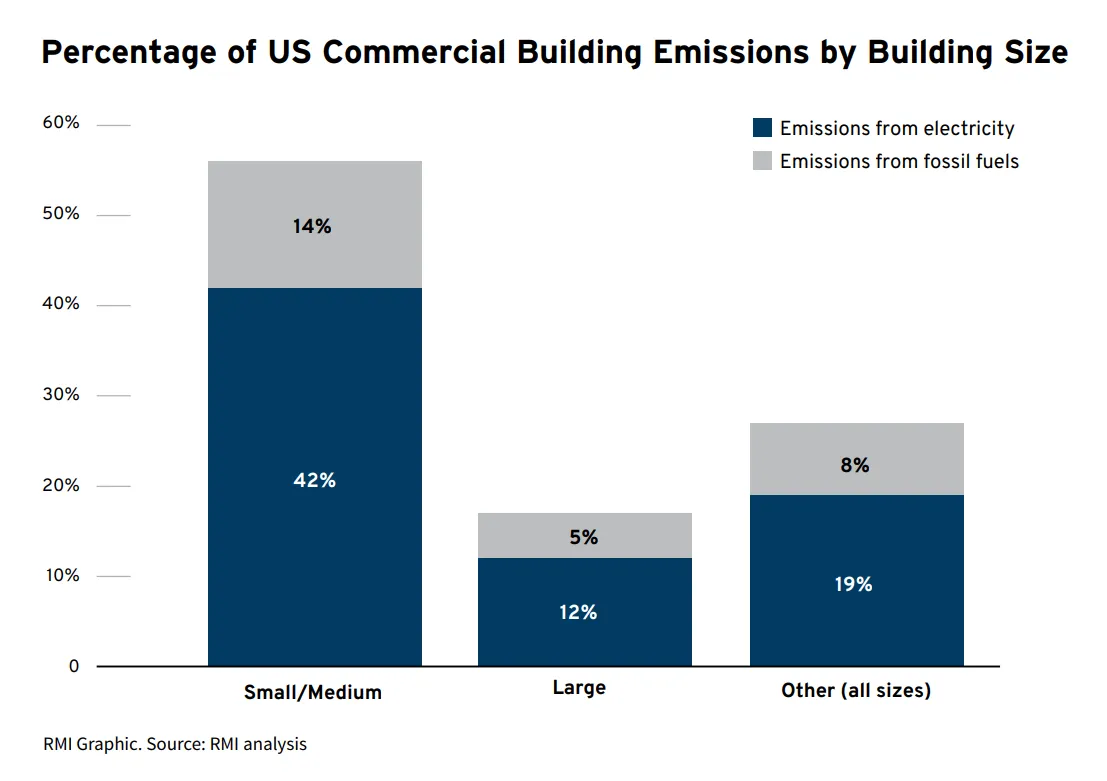Dive Brief:
- Although large commercial buildings receive the most climate-aligned investments and capital, there is a growing need for such investments to target small and medium-sized commercial buildings to meaningfully reduce carbon emissions in the U.S. real estate sector, says RMI, an organization that works with businesses and policymakers to decarbonize energy systems.
- Building operations account for 23% of annual carbon emissions in the U.S., with a majority of those emissions coming from existing buildings, according to RMI’s March 2024 report on financing building decarbonization. Commercial buildings generate 37% of U.S. building emissions, with small and medium-sized buildings contributing about 56% of those emissions, the report says.
- Investors, lenders and regulators can ramp up decarbonization efforts by channeling financial resources toward retrofits that can boost energy efficiency in existing buildings, RMI says.
Dive Insight:
Pressure to decarbonize buildings is intensifying, with investors and lenders increasingly on the lookout for buildings that have attained recognized sustainability certifications. However, financial barriers exist, with existing smaller buildings less likely to attract capital or financing from investors and lenders, compared to larger enterprises or new builds, RMI notes.
The report recommends that lenders conduct, as part of their underwriting process, a cost-benefit analysis of efficiency upgrades and the replacement of fossil fuel technologies with renewable ones. Lenders must also allow replacement reserves to be used for deep efficiency upgrades, while incentivizing energy performance improvements by offering inefficient buildings lower rates or improved terms contingent on energy improvements, the report notes.
RMI says its study used average grid emissions factors from the National Renewable Energy Laboratory’s 2022 version of Cambium — data sets containing modeled hourly emission, cost and operational data for a range of possible futures of the U.S. electricity sector through 2050 — at the national and state level. Roughly 396 million tons, or 73%, of the 540 million tons of commercial buildings’ carbon footprint come from electricity use. Fossil fuel use contributes nearly 27%, or 144 million tons, the report says.

Commercial buildings with poor energy efficiency should get access to financing, RMI notes, emphasizing that lenders should work proactively with borrowers to replace fossil fuel-powered systems with higher-efficiency electric systems.
Removing financial barriers to accessing sustainability solutions is possible, said Travis Sheehan, North America lead for City & Hubs at Shell Energy, pointing to subscription options that involve initial investments in building efficiency improvements from energy solution providers.
















